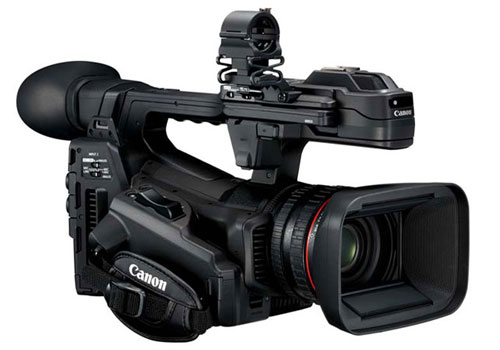News
XF705, the new camcorder from Canon
Canon Europe announces the release of a new member of the XF family of camcorders.
Canon’s XF705 is equipped with the latest generation XF-HEVC format. It is capable of making 4K UHD 50P 4:2:2, 10-bit 4K UHD 50P recordings on SD cards. The creators of the XF705 have decided to incorporate a combination of the CMOS sensor and a DIGIC DV6 processor. Canon claims that there is a considerable improvement in noise, sensitivity and depth of field. In addition, there is a range of enhanced HDR functions, including an advanced 12G-SDI interface and IP streaming.
Supported by High Efficiency Video Codec (HEVC) video compression and taking advantage of the industry-standard Material eXchange Format (MXF) container, Canon has developed the XF-HEVC file format. It offers a new encoding technology that is twice as efficient as H.264/AVC. By using XF-HEVC, the XF705 optimizes 4K UHD data handling, bringing the ability to record high-quality, 50P, 4:2:2, 10-bit 4K UHD directly to a wide range of SD cards.
The XF705 is capable of recording HDR files internally, using both HDR Hybrid Log Gamma (HLG) and Perceptual Quantisation (PQ) formats. This new camcorder also has extensive HDR assist functions, helping the user to control exposure. The XF705 is also capable of outputting an SDR signal while internally recording an HDR file to an SD card, enabling simultaneous HDR/SDR production. Equipped with an advanced 12G-SDI interface, which sends a high-quality, uncompressed 50P UHD 50P signal over a single SDI cable, the XF705 also has the ability to stream 4K UHD HDR images, using the HEVC format, over a network.
The XF705 also features Canon’s exclusive Dual Pixel CMOS AF. This system provides autofocus with tactile focus control, Face Detection AF and subject tracking. The Dual Pixel Focus Assist provides graphical guidance to aid accurate focusing when focusing manually.
Finally, the XF705 features a 4K lens with L-series quality, a 15x zoom ratio, a maximum aperture of f/2.8, a 25.5 mm wide-angle focal length and an image stabilizer (IS).



